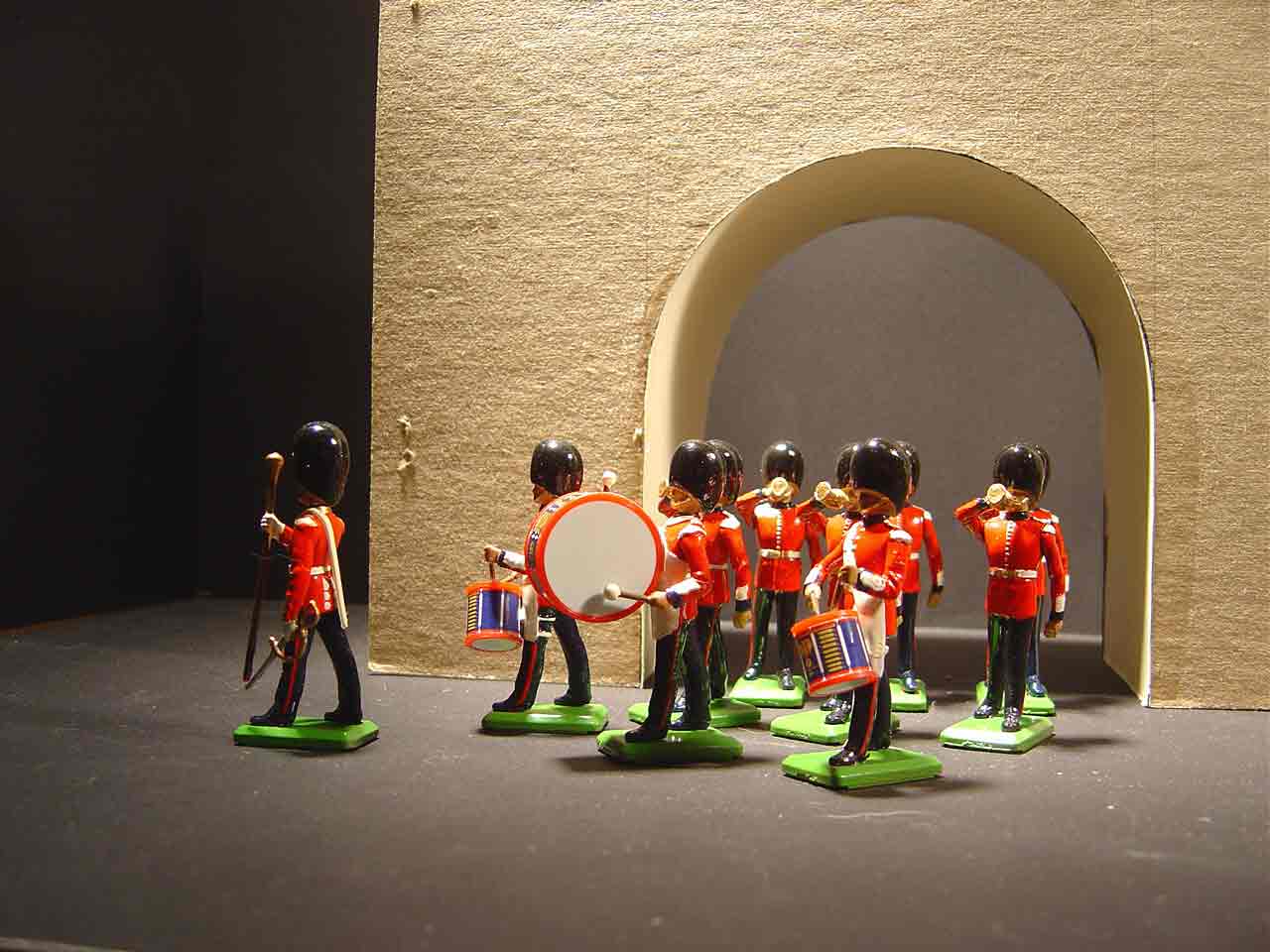 ERE we see the entire inside surface of the Black Castle's entrance arch. The strip of thin cardboard that lines the arch, cut from a used manila file folder (see Plate 37), is glued at the edges between two arched openings at the front and rear surfaces of the curtain wall. The inside of the model's curtain wall is hollow, but the curved lining of the entrance arch fools the viewer into believing that the wall is solid from front to back.
ERE we see the entire inside surface of the Black Castle's entrance arch. The strip of thin cardboard that lines the arch, cut from a used manila file folder (see Plate 37), is glued at the edges between two arched openings at the front and rear surfaces of the curtain wall. The inside of the model's curtain wall is hollow, but the curved lining of the entrance arch fools the viewer into believing that the wall is solid from front to back.
--more--

"This thin cardboard is known as manila. Therefore, the folder from which it is made is called a manila folder," the Artisan replied.
"It is called manila," he continued, "because cardboard like this was originally made from Manila Paper. Manila paper was made from Manila Hemp, which is obtained from abaca, or Musa textilis, of the family Musaceae, a plant native to the Philippines, an island nation in the Pacific Ocean, the capital city of which is called Manila."
"The sheer scope of your knowledge is remarkable!" exclaimed the Advisory Aesthetician. "You remind me of that fellow Arronax, that French professor who went hunting for sea-monsters in that Jules Verne novel I read when I was a lad, 'Twenty Thousand Leagues Under the Sea'. By the way, perhaps you can explain something that has always puzzled me. Is the sea actually twenty thousand leagues deep?"
"Certainly not, replied the Artisan. 'Vingt mille lieues sous les mers', written in 1870 by the French author Jules Verne, was published in English in 1873 with the title 'Twenty Thousand Leagues Under the Sea'.
"This English title often confuses readers, because the English title seems to imply that the sea must be at least twenty thousand leagues deep. Since a league is a measure of distance equal to three miles, the title seems to be referring to an ocean depth of 60,000 miles, which is greater than the diameter of the entire planet. The confusion appears to arise from the use of the word sea in the English translation. In the original French title, Verne used the word mers, meaning seas, that is, the plural of sea.
"Perhaps the title should have been translated as 'Twenty Thousand Leagues Under the Seas', or even 'Twenty Thousand Leagues Under the Seven Seas'. You see, Twenty Thousand Leagues refers to the total length of Professor Arronax's voyage in the submarine Nautilus, not to the depth of a particular body of water."
"I understand," said the Advisory Aesthetician.
Go to top of page